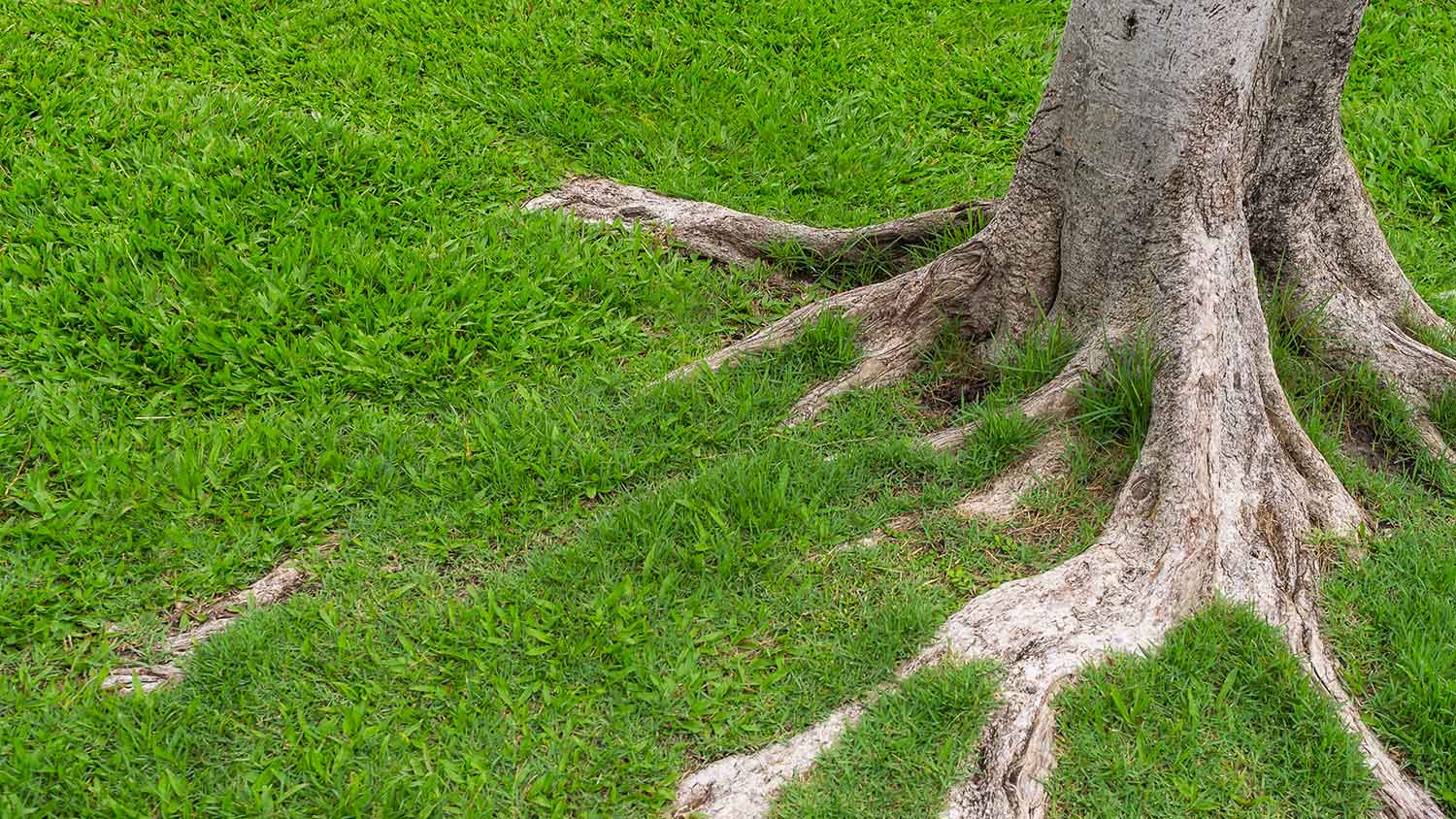4 Foundation Problems That Can Ruin Your Roof
From the bottom to the top—your roof is only as healthy as your foundation


A damaged foundation creates pressure, cracking, and shifting in your roof
Poor drainage is the top cause of foundations ruining roofs
Tilted floors are warning signs that your foundation is in trouble
Horizontal foundation cracks are a red flag
Did you know that faulty foundation can damage your roof? While it may seem like the roof and foundation represent opposite ends of your home, these two features are intricately connected. Take a look at how these four foundation problems threaten your roof’s wellbeing.
1. Inadequate Drainage
Inadequate drainage is the most common foundation problem that leads to roof damage. Improper drainage that doesn't direct water away from your foundation compromises the structural integrity of your home.
Clay expansion caused by flooding can cause your home's foundation to move—and your roof along with it.
While poor drainage caused by a lackluster gutter system is the top cause of flooding around a home's foundation, factors like broken water lines, damaged sewer lines, and creeks running near the property can all contribute to this issue.
2. Tree Roots

Tree roots that grow in from under the pavement surrounding your home can siphon moisture from your foundation until it cracks. Common signs that tree roots are damaging your foundation include:
Slow drains in your home
Cracks in floor tiles
Nails popping out of drywall
Bowing walls
Leaking pipes
Changes in your home's water pressure
You may need to consider cutting tree roots before making a protective dam that will reduce interactions between the roots and your home's foundation. A foundation expert could also recommend removing certain trees and roots systems.
3. Foundation Cracks
General foundation cracks will send shockwaves right up your home's "spine" to reach your roof. Soil movement is common in soils with heavy clay content. The cycle of swelling and shrinking that occurs with clay soil puts a home at risk for cracks. Even natural causes like erosion and earthworms can make foundations crack.
While many foundations experience cracks, it's important to look for horizontal cracks that could point to a bowing foundation—which is a serious matter, as it threatens your home’s structural integrity. This is but one of a few solid reasons not to delay foundation repairs.
4. A Sloping Floor
A tilted foundation can crack a roof. While foundations often slope with age, it's important to pay attention to the "levelness" of your floors. Have you noticed that objects seem to roll when dropped? You may also notice that doors in your home seem to open and close on their own. It could be a ghost—or, more likely, it could be a tilted floor.
You may also notice that you're having trouble opening and closing your windows easily due to the pressure from the shifting angles. Finally, some visual signs include things like separation in your caulking, cracks near doorways, and cracks in walls.
You can gauge how severe your tilt is by observing how quickly a ball rolls away. A faster roll implies a more serious tilt, which puts a lot of pressure on your roof. Hiring a qualified foundation repair professional to address these problems is essential to maintaining a strong and stable foundation—and roof.





- Roofers
- Metal Roofing
- Roof Repair
- Roof Inspection
- Vinyl Siding Repair Contractors
- Flat Roofing Companies
- Commercial Roofing
- Emergency Roofing Companies
- Leaky Roof Repair
- Metal Roof Repair
- Business Roof Repair
- Flat Roof Repair
- Tile Roof Repair
- Slate Roofers
- Rubber Roofers
- Roofing & Siding
- Metal Roof Installation
- Affordable Roofing
- Roof Sealing
- Attic Ventilation Contractors
- 11 Warning Signs of Foundation Issues
- 8 Common Causes of Foundation Cracks
- 11 Foundation Maintenance Tips to Keep Your Home Standing Strong
- Your Guide to Dealing With Foundation Drain Issues
- What a Foundation Inspection Is and How to Check Yours
- 10 Reasons You Really Shouldn't Delay Foundation Repairs
- 8 Tips to Avoid Foundation Repairs
- 6 Sinking Foundation Signs and What to Do Next
- How Tree Roots Can Impact Your Home’s Foundation
- How to Fix Foundation Cracks: Your Guide to Identifying and Repairing Cracks by Type










